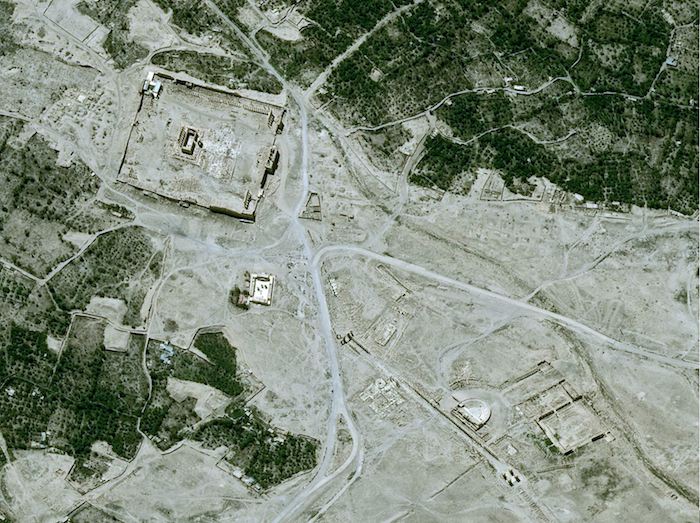.

The archaeological site of Palmyra no apparent destruction
May 27, 2015
The Syrian city of Palmyra is under the yoke of the organization Islamic state since 20 May 2015. On 22 May, the Pleiades satellite captured an image of its archaeological site, one of the grandest of the Middle East. 3 questions for Jean-Baptiste Yon, researcher at the laboratory "History and sources of ancient worlds."
You made twenty missions on the archaeological site of Palmyra between 1996 and 2010. Find yourself the main Roman ruins in this picture?
Yes. Note above all, top and left, the great sanctuary in the center of Nice with its temple. This sanctuary of about 200 mx 200 m was built between the 1st and 3rd century AD. It was the center of religious life of the city in antiquity. Bottom right, with its semicircular shape, the theater was never completed. Below, we see the great colonnaded street between the monumental arch and Tetrapyle which consists of a set of 4 x 4 monumental columns. Adjacent is the agora, a place of public meetings and one of the places where we stood the statues of the benefactors of the city.
.

These remains do they appear damaged?
I do not observe any visible damage. Compared to images available on Google Earth, it is mainly the cemeteries - that are not visible on the zoom - which seem to have been affected, and that between 2010 and 2014 before the arrival of IE. Have these graves were partially buried to protect them, or is it a consequence of looting? It is difficult to know.
.

Great colonnaded street and monumental arch of the ancient city of Palmyra. Credits: Laboratory HiSoMA / Jean-Baptiste Yon.
.
Do you fear for the future of the site?
There could be destruction "for example", even if it is difficult to imagine to destroy all vestiges of Palmyra. Another risk is related to excavations and looting, or the museum - but apparently it has been emptied by the troops of the regime before the fall of the city - or especially in cemeteries which contain readily marketable sculptures. Irreparable damage has been done at other sites in the region controlled by the Islamic State, such Dura Europos and Mari, along the Euphrates. These sites now look like plowed fields as the remains were excavated, dug. Elsewhere, other sites outside of the territories conquered by the AEs were subjected to similar practices - in Apamea for example - or were partially destroyed during fighting in Aleppo as.
Focus: Pleiades is a French optical observation system at very high resolution with 2 identical satellites, Pleiades-1A and Pleiades-1B, respectively launched December 17, 2011 and December 1, 2012. This system was developed under the responsibility of CNES. It was built and is operated by Airbus Defence and Space.
Quelle: CNES
4888 Views
